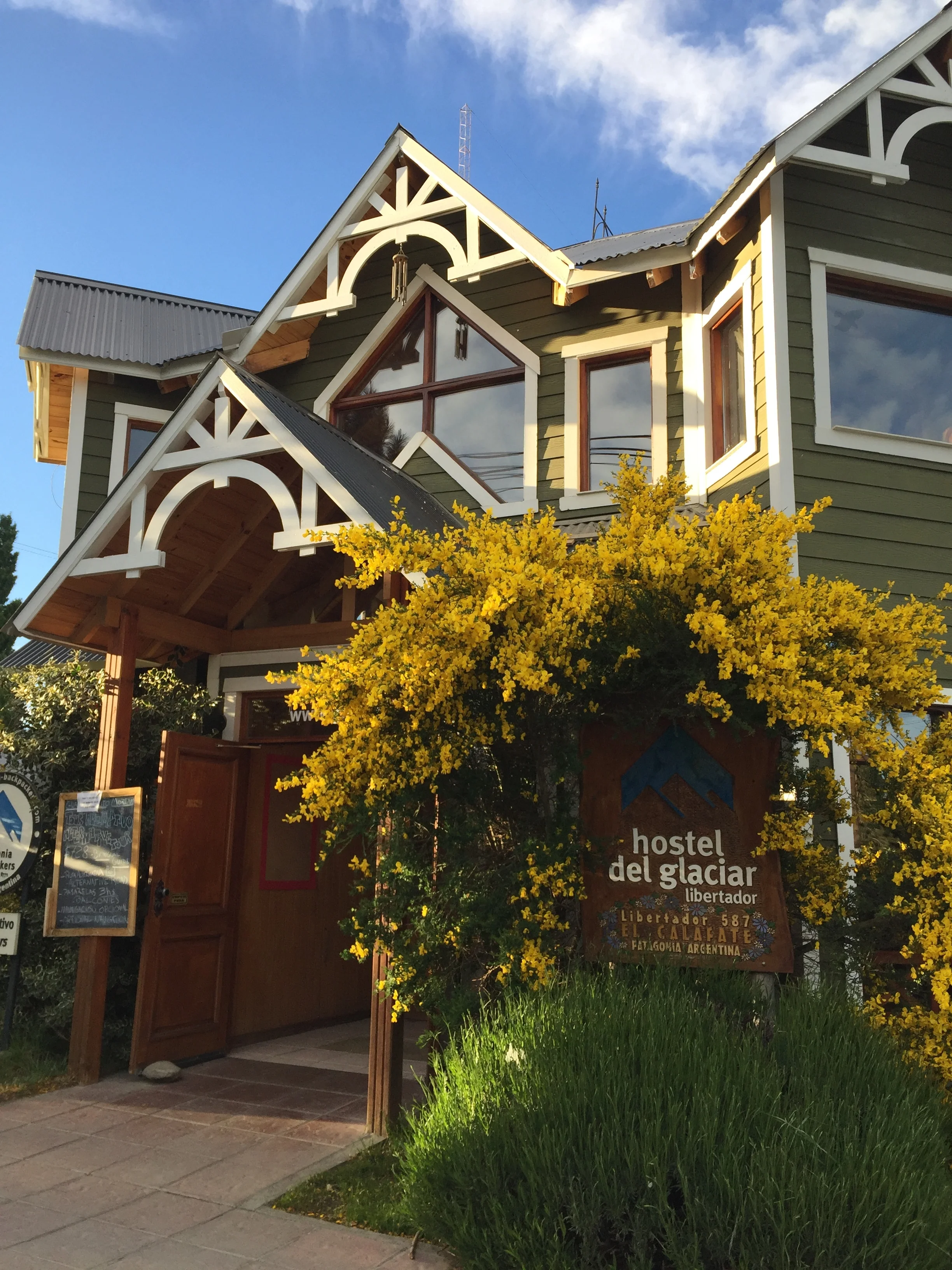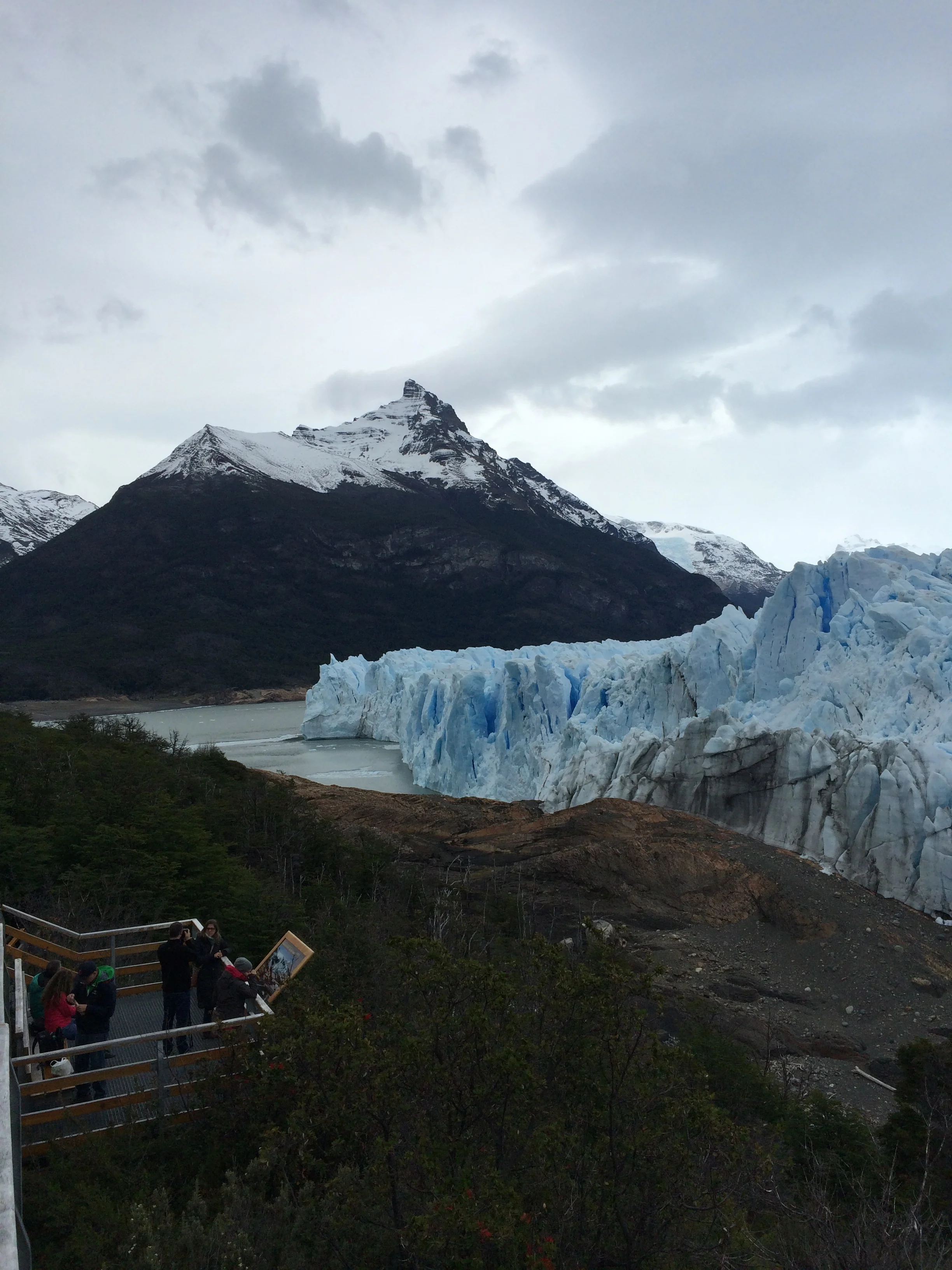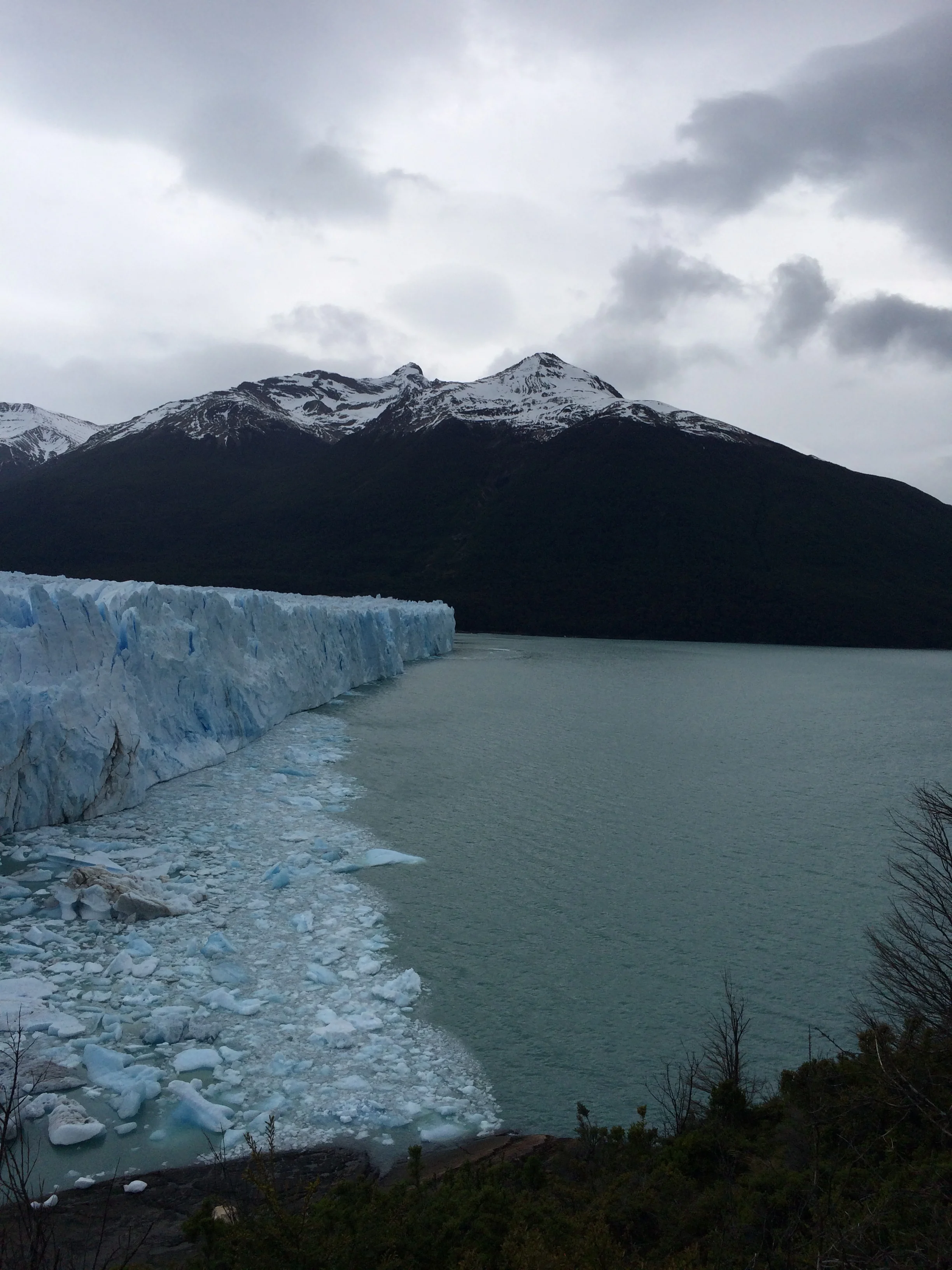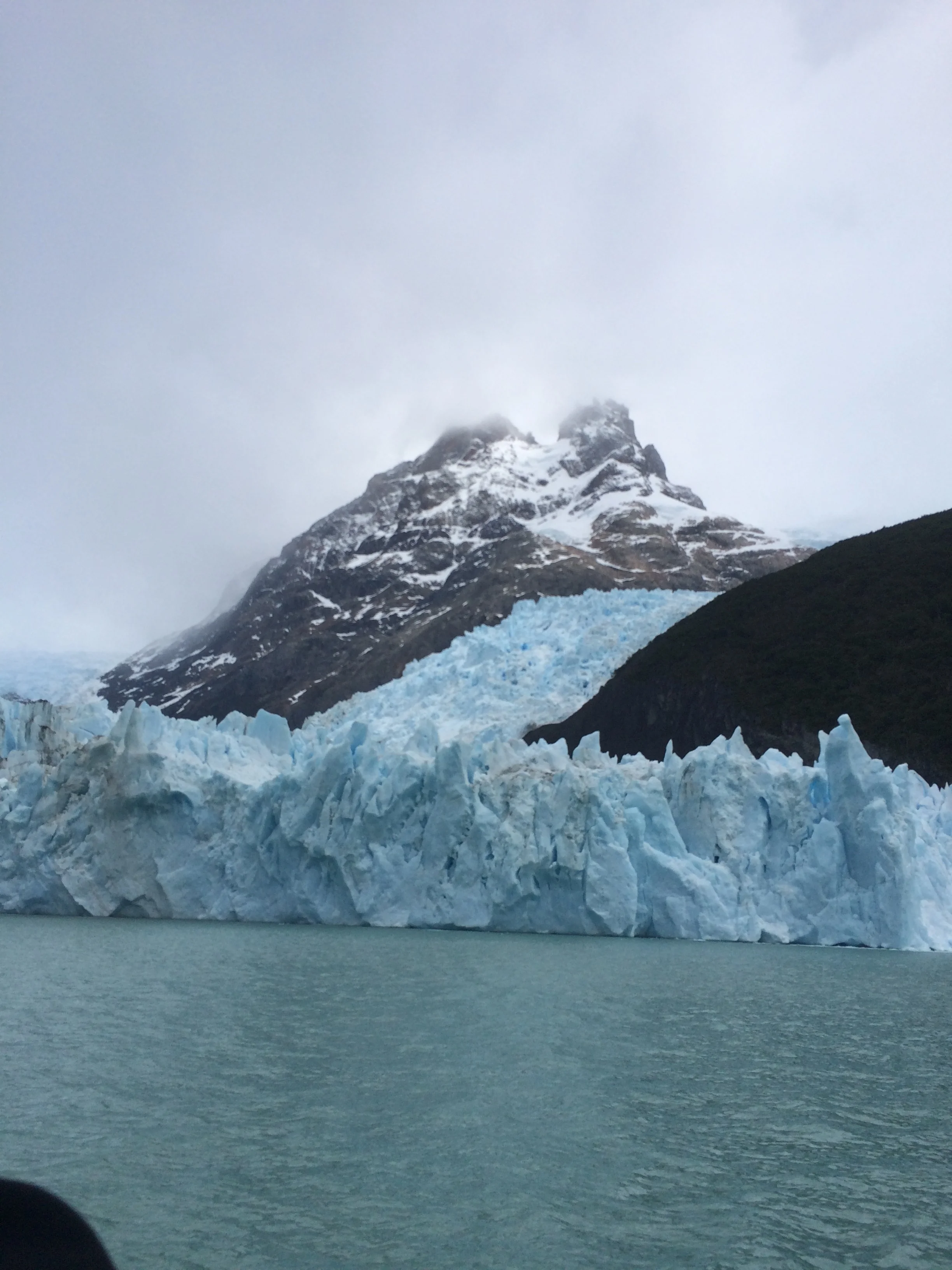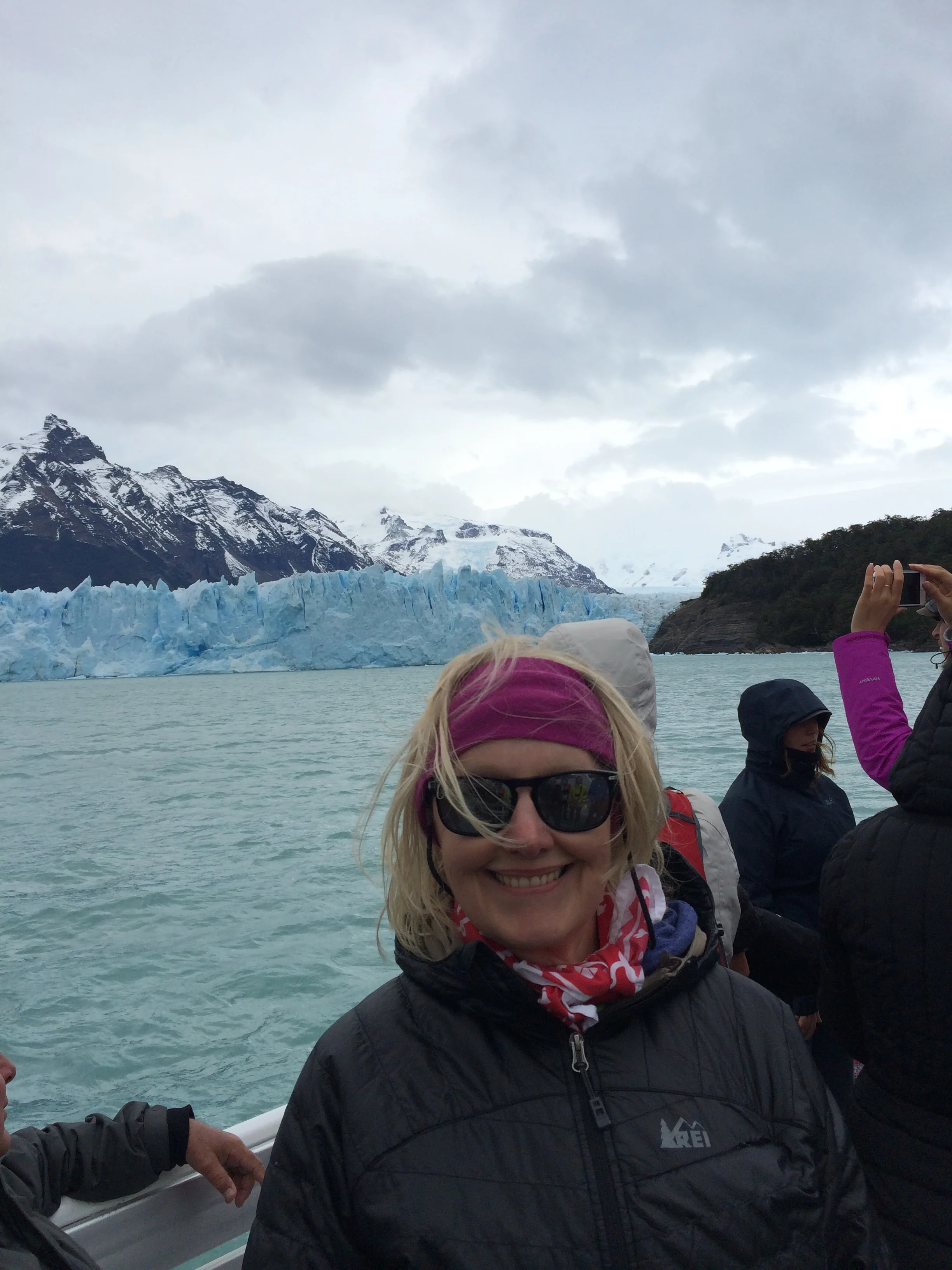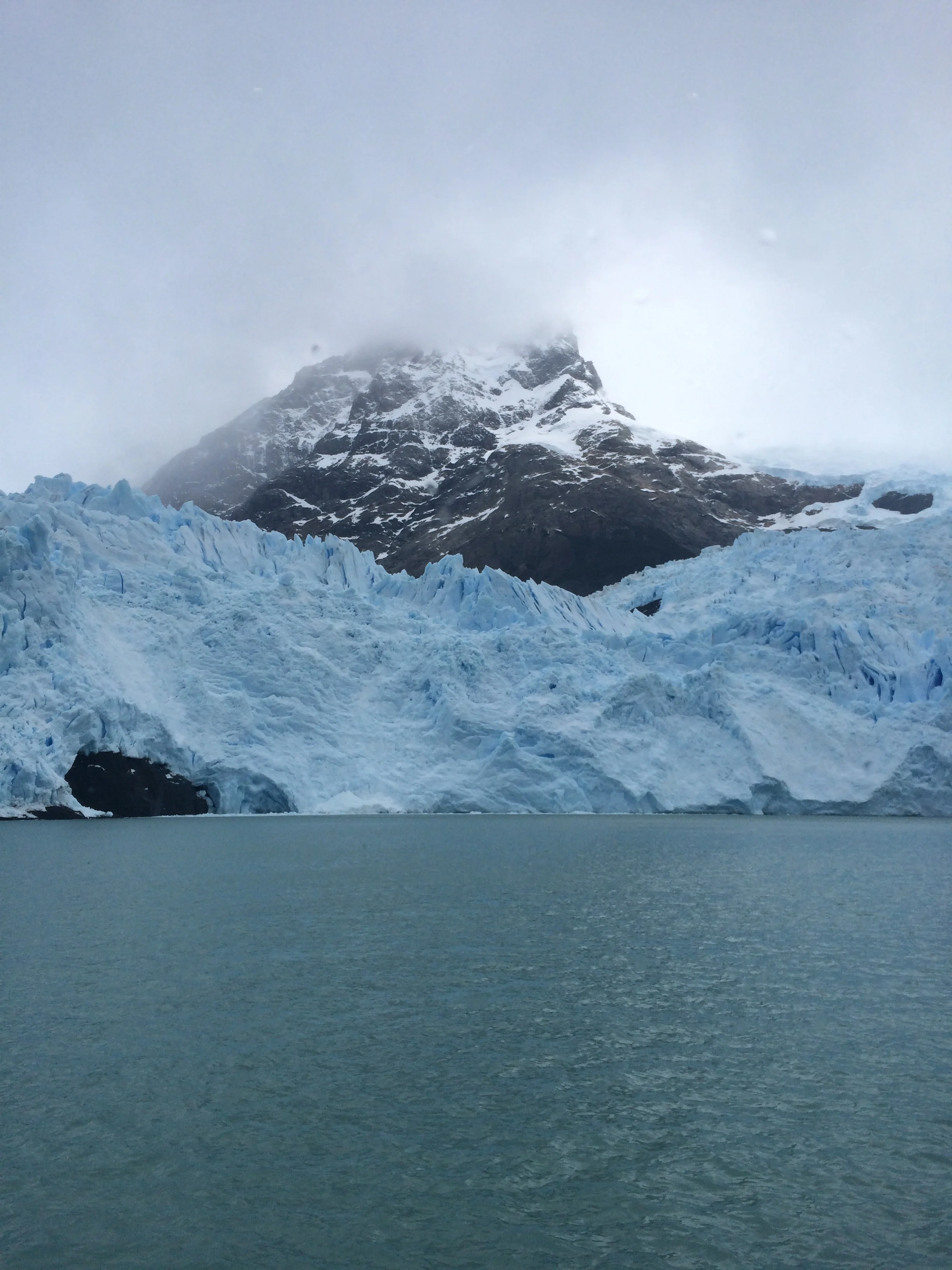El Calafate Argentina
Moreno glacier
Our hostel
Time to move to the colder south toward the Straits of Magellan. Next stop is El Calafate, named for some ugly bush that survives the harsh climate . We forego the 30 hour bus trip and for a measly extra $100 we take a 2 hour flight, land, pick up a cheap collective with 8 others, and arrive at our Del Glacier Libertador Hotel. Very nice, with heated floors and separate bath and shower. We get breakfast and also have kitchen privileges. What is really great is that we book our tours through the hotel. We also try to book bus trips, but that requires a walk to the local bus station and a 2 hour wait to order up. Our plans are somewhat complex as we had 3 separate bus legs to get to other cities and sites we want. The clerk is really pretty efficient in telling us off the top of his head what buses and time, and routes are available. It is just the computer entries and ticket printing where the system slows down. Then, of course, he says this is the cash price, no credit card. So the cash we had painstakingly acquired with numerous visit to ATMs was cut into substantially. In these far out sites where cash is king we are always worried that the ATMs are dry, but really, the bus station rejects credit too.
The Estancia out building
The Estancia
We get picked up at 8 am for a trip to the Glacier Perito Moreno. Our trip starts by traveling the back roads to see the countryside up close and several “Estancia”, at least the entrances as these great estates are up to 100,000 square Hectares, that is 368 sq. Miles. They have cattle and sheep, and horses. We stopped at an outbuilding that had been turned into café museum, with interesting displays of the predators in the area. Janet tried to play a bar game, swing the ring. The view was of a rugged landscape. This area is where the Goucho culture was active. We think of these latin cowboys as glamorous, but according to our guide they were often underpaid and when they rose up in protest the government stepped in to protect the land owners, blood shed did ensue.
Frank's reaction to calving
We arrive at Glacier Perito Moreno, which is in the Parque Nacional Los Glaciares. This is a spectacular natural phenominum. We can't believe we are here. The glacier is the third largest in the Southern Pantagonia ice field. The total southern ice field area is about 750 km2, or 290 sq. miles, and blocks the Brazo Rico Sur channel and the Brazo Upsala Norte channel of Lake Argentina. In my layman terms, the ice does not freeze on top of the water. Rather, the snow that continuously falls on the frigid surrounding mountains does not melt but compresses due to extreme weight and over centuries pushed down the mountain side into the water as a solid wall taking gravel, rocks,and soil with it. Here, the glacier is about 40 to 50 meters above the water line and 70 meters below the water. This glacier does not recede and in fact has been growing outward. The glacier face is 5 km long. We decide to take a boat onto the river and cruise close in on the glacier face. It is a massive wall with spires at the top in some areas, like Superman’s Fortress of Solitude, or John Snow’s Wall. It has a blue hue or shadow. The water is milky blue which our guide says is due to the sediment ground up and pushed by the ice, like swirling salt in water. As we all watch in silence, you can hear the sound of shotguns in the distance. The ice is moving and cracking. We where lucky, as right near us a wall of ice broke off and slide into the water. The cracking, shotgun sound came a moment later. This piece of ice is the size of a ranch house. A fellow viewer commented that was worth the cost of the boat. I responded “How many people in the world have just seen what we have.”
At the site hanging around watching the blueish colored Glacier and waiting for the next great “calving” or watching the condors float above is really breathtaking. We then hiked the walkway on the peninsula across from the glacier face and around its side. Stopping for lunch we were again treated to another calving and our little group cried out in glee. Once the ice break submerges we noticed that a circular pattern of ice bergs flowed to the top. That could be expected, but what was surprising was that the circular pattern did not grow outward, but on this day stayed in place. We walked to the side of the Glacier, where snow touched rock. As we walked we could hear more shotgun crackles, but calving was not visible, as it may have been on the other waterside. We heard at least 8 shotgun crackles. Lucky Janet saw a 3rd calving while I was photographing in a different direction. Some authors have called this process an existential experience. We must agree. Check out the photos..
A quick shot of ice breaking (calving)
Tomorrow we are leaving for another boat trip to see more Glaciers.
This trip is further away and takes us on the north side of Lake Argentina into the Brazo Upsala and Brazo Norte waterway. Yesterday we were at the Brazo Rico Sur and walking on the Magallanes Peninsula which is closer to El Calafate. This excursion is different as we are placed on a double deck catamaran with twin 1400 horsepower engines that accommodates 100s of people for a total 6 hour trip. As we leave the port we are again moving in the milky blue green water. The ship is moving fast in open water until we approach the Diablo del Inferno passage between two small peninsulas. Here is where we see our first icebergs. These have broken off from the glaciers and seem to be stationary. At one point we approach a giant Iceberg the size of two 4 bedroom colonial homes in Livonia, MI. It has carved shapes. This iceberg is light whitish blue that clearly contrasts with the milky water it sits in. We are close. As we know, most of its body is underwater but the guides say it can flip over with out warning. We continue in the straights and come upon our first glacier, where the snow has formed an upside down “V” moving around a stand of rock. On one side the glacier has formed a waterfront wall, on the other side the snow is flatter and smoothly rolls into the water. Not as impressive as Moreno, but very wide.
The next glacier we see is contained in the V of two mountains. It is interesting because the glacier has receded and the ground is black, no vegetation has returned, while close by the land is green.We saw another smaller glacier with the telltale black ground from receding.
The next glacier is the tallest glacier in Argentina at approximately 100 meters above the waterline. The lake is very deep here so this glacier does not touch bottom though it's underwater operation is still enormous. This Glacier has the spires just like Moreno. We were lucky enough to see one calving action, but the piece was not as large as yesterday's version.
Another glacier was very different in that it was high in the mountain creating its eventual pathway to the waters edge. When we finished it took a good 1 and ½ hours to get back to port. It was another stellar excursion. Again enjoy the photos.
The largest iceberg

